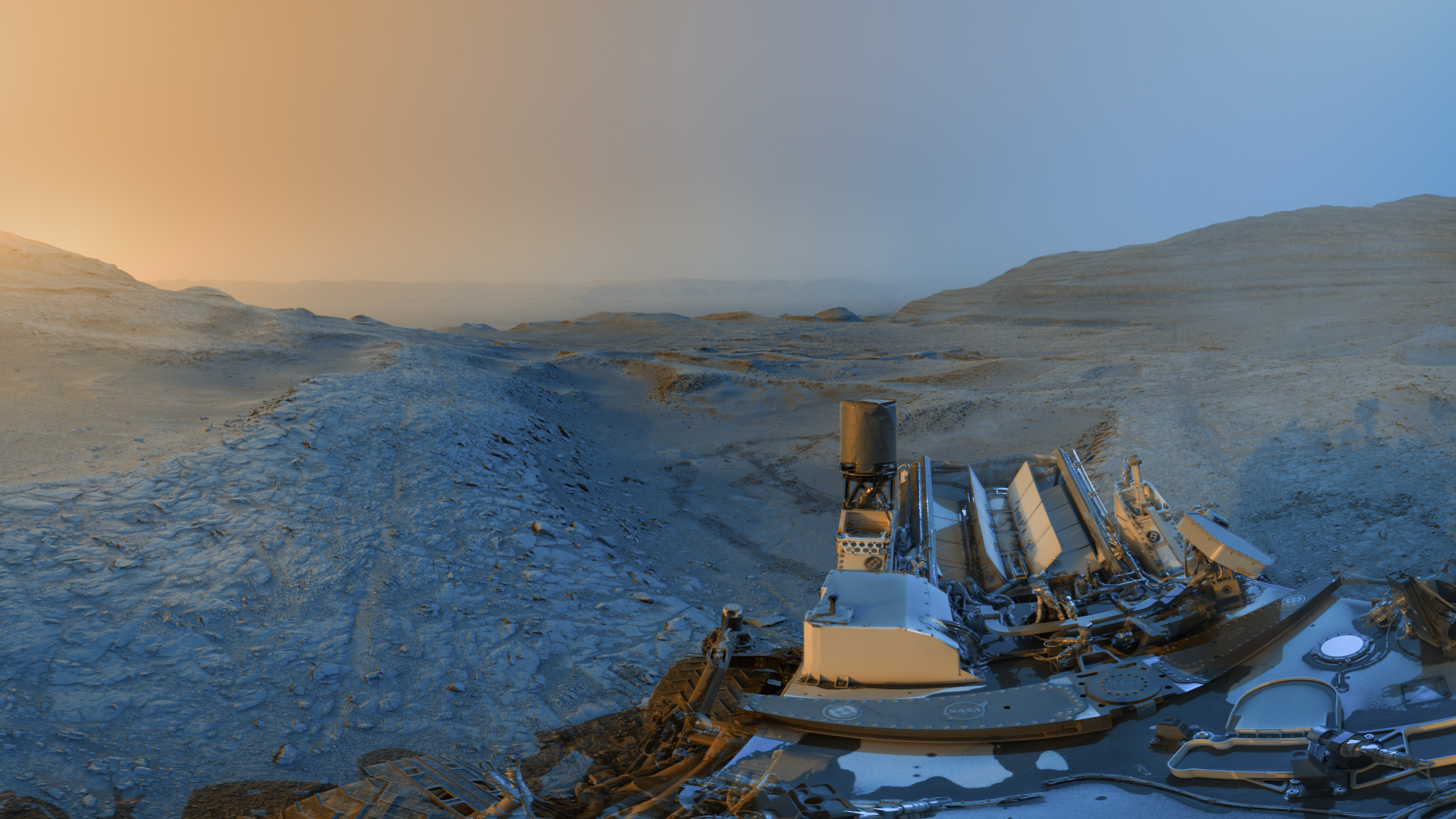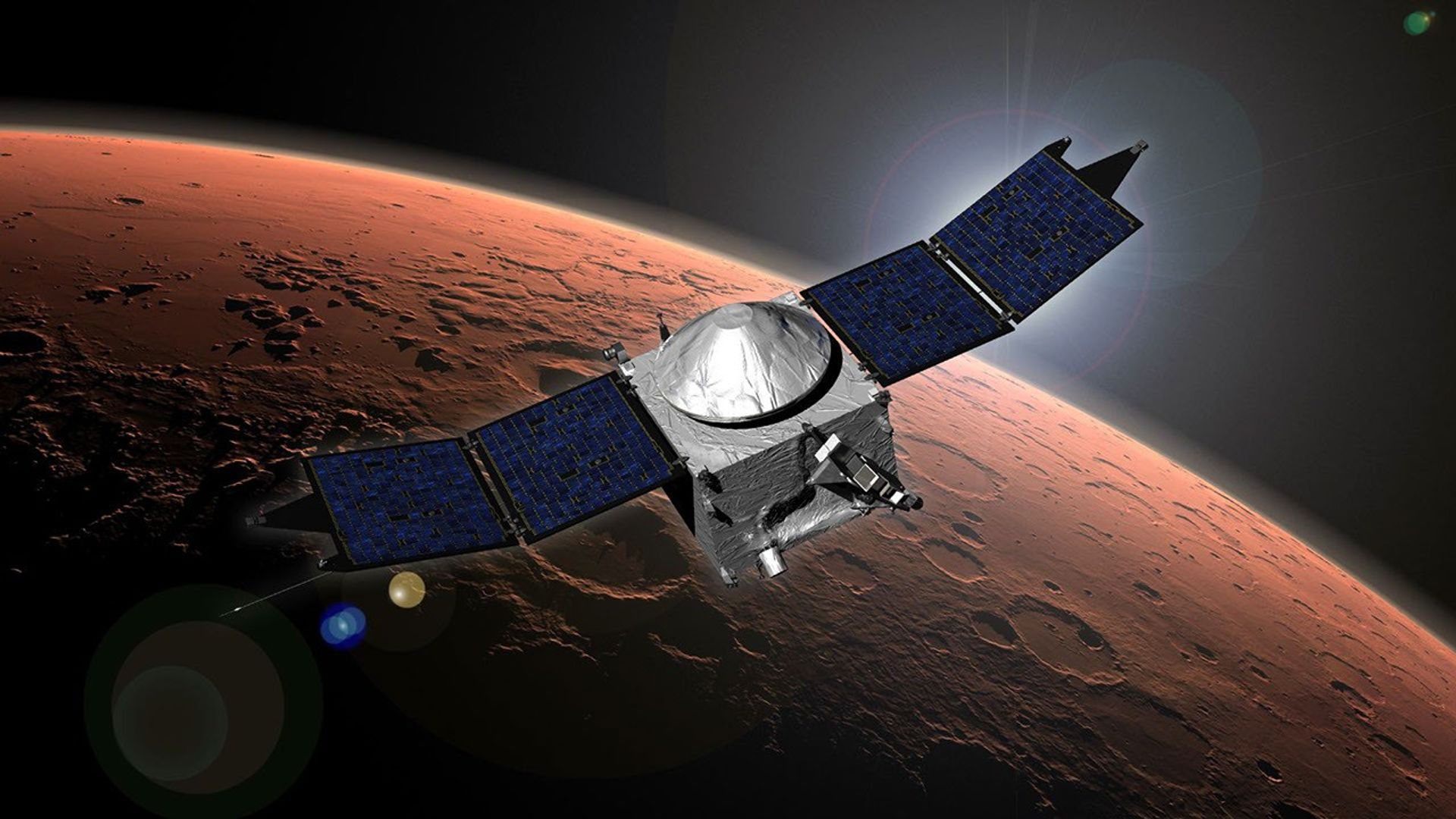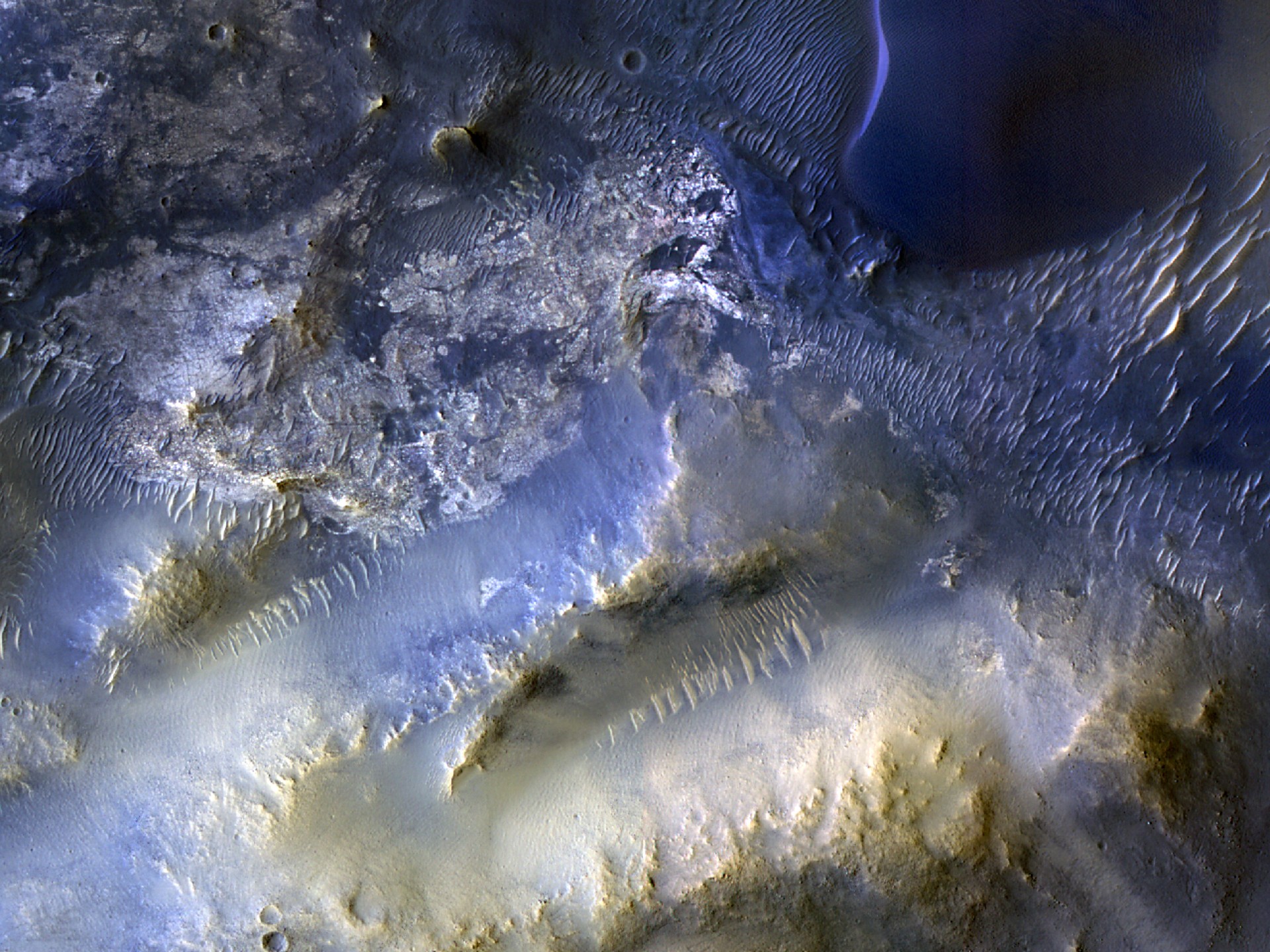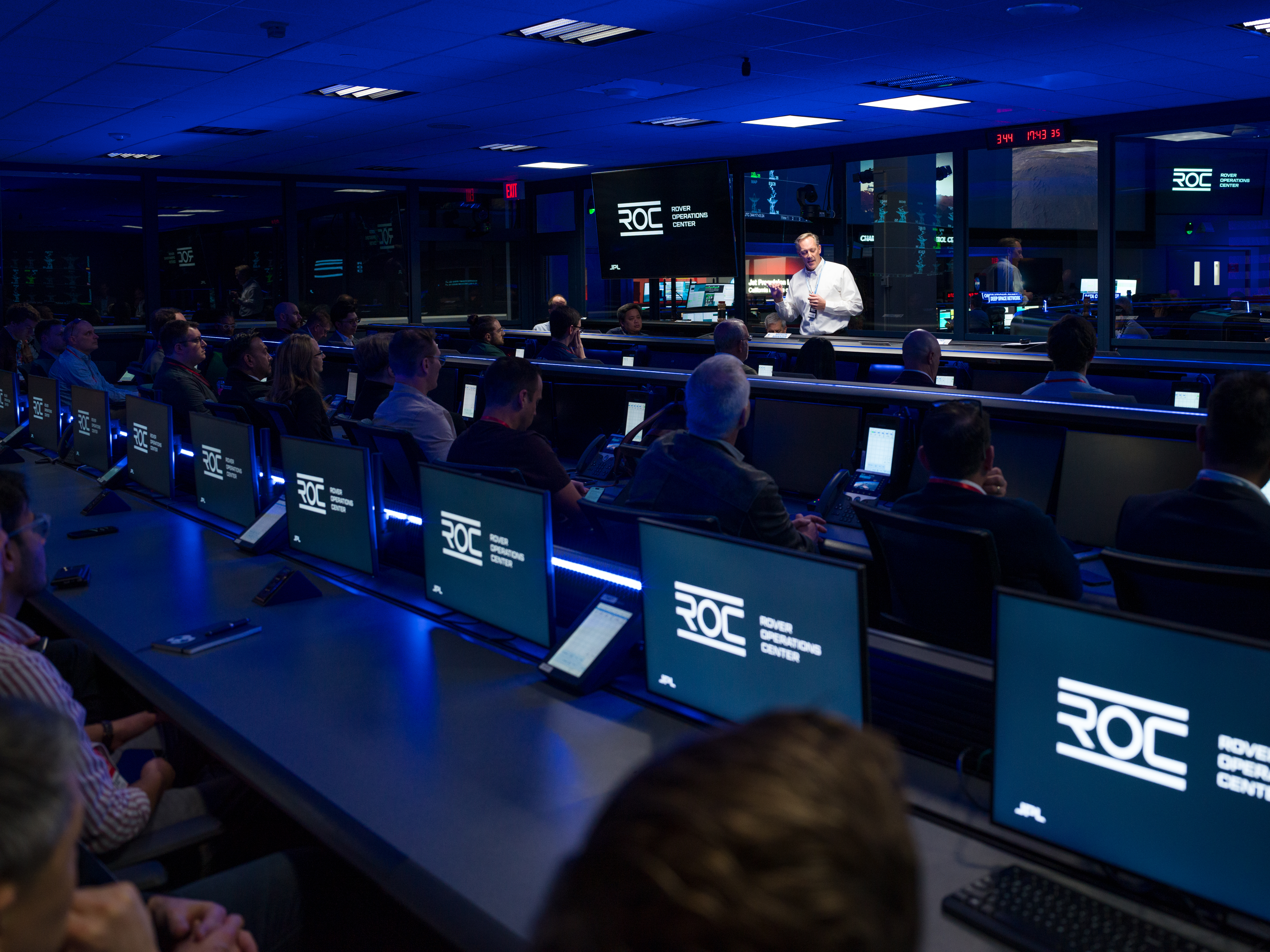ExoMars Program
ESA’s (European Space Agency) Exobiology on Mars program is a series of missions designed to understand if life ever existed on Mars.
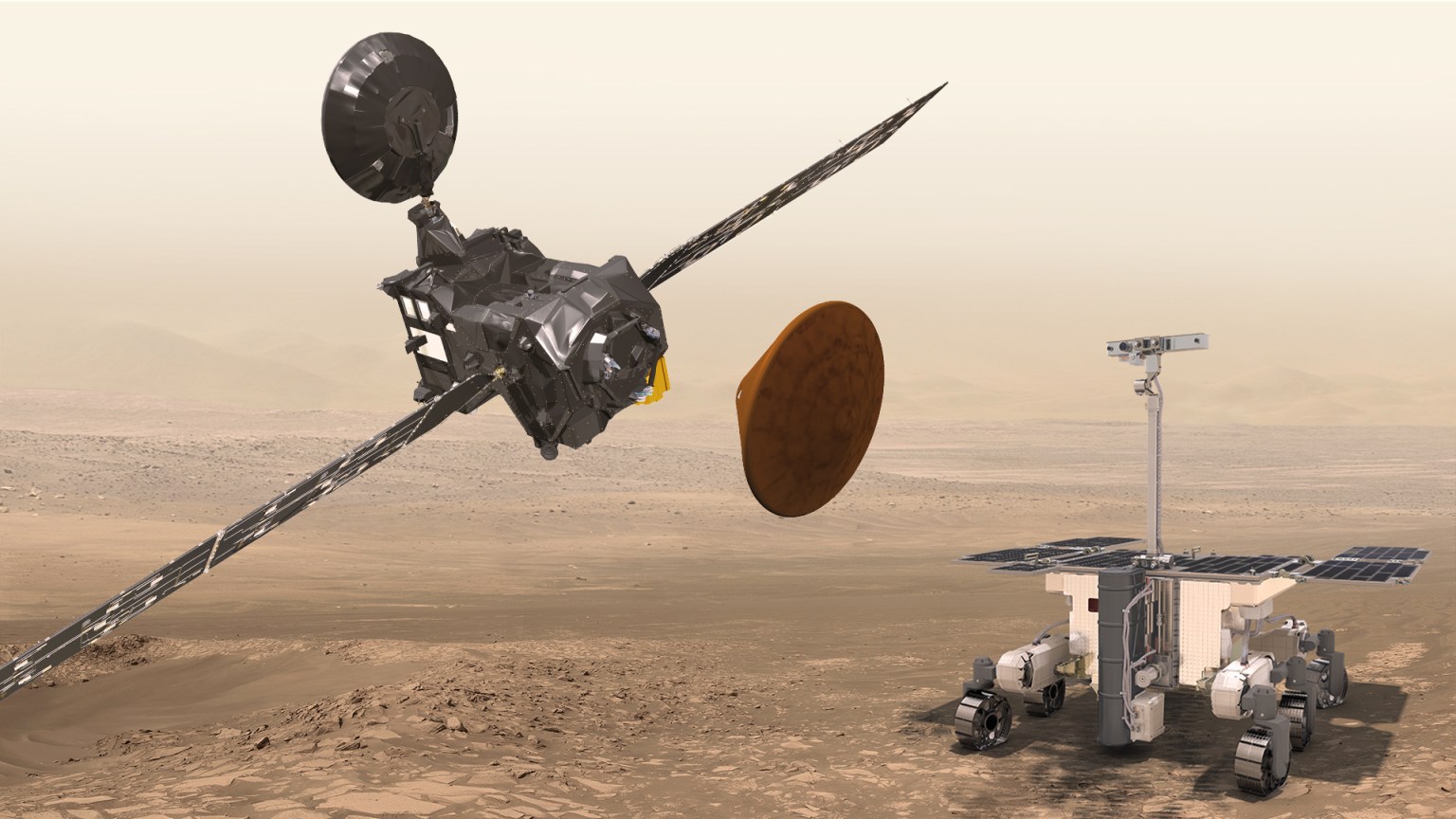
Trace Gas Orbiter
The first mission in ESA’s ExoMars program is called the Trace Gas Orbiter (TGO), undertaken in partnership between ESA and Russia's Federal Space Agency, Roscosmos. The Trace Gas Orbiter studies the Martian atmosphere for the presence of methane and other gases that may be present in small concentrations. As part of an effort to develop ESA’s abilities to deliver missions to the surface of Mars, TGO carried with it the Schiaparelli lander Entry, Descent, and Landing Demonstrator Module. Schiaparelli entered the Martian atmosphere, but ESA's mission team lost contact shortly before the lander's expected touchdown.
NASA contributed two Electra radio communications systems to the ExoMars Trace Gas Orbiter and has assisted with the navigation, tracking, and data return of the spacecraft. Using the Electra radios, TGO plays an important role today in relaying scientific data from the surface of Mars to Earth on behalf of NASA’s Curiosity and Perseverance rovers.
Rosalind Franklin Rover
ESA’s Rosalind Franklin rover has unique scientific potential to search for evidence of past life on Mars thanks to its drill and scientific instruments. It would be the first rover to reach a depth of up to approximately 6.6 feet (two meters) below the surface, acquiring samples that have been protected from surface radiation and extreme temperatures. The drill would retrieve soils from ancient parts of Mars and analyze them on-site with its onboard laboratory.
NASA plans to contribute the mass spectrometer and the main electronics units for the Mars Organic Molecule Analyzer (MOMA) on the rover. The MOMA instrument would allow detection and characterization of organic molecules on Mars.
Other planned contributions by NASA to the Rosalind Franklin mission include procuring a U.S. commercial launch vehicle, the propulsion system for the lander, and the potential use of U.S.-provided Radioisotope Heater Units (RHUs) to help keep the rover’s systems and instruments at proper operating temperature on the often frigid conditions found on the surface of Mars.
On May 16, 2024, NASA and ESA (European Space Agency) signed an agreement to expand NASA’s work on Rosalind Franklin.



























